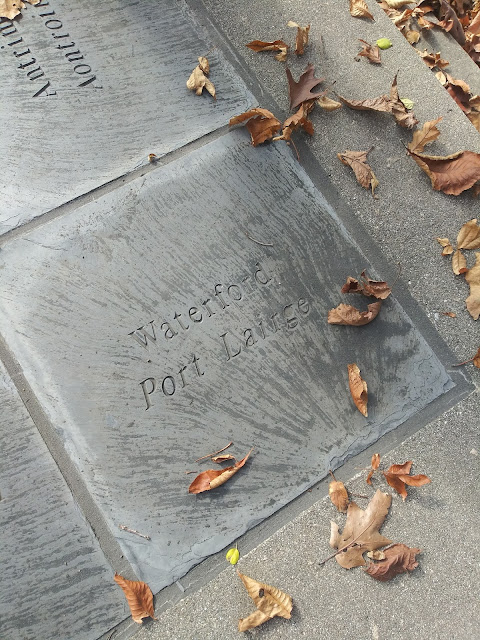 |
| Stairway to Hell - Lake Forest Cemetery, Grand Haven, MI. All photos on this blog are by J. Moyer Wednesday, July 14, 2021 |
Stairway To Hell is one of the famous urban legends in Michigan. WZZM13 News listed Lake Forest Cemetery as one of the "nation's most haunted [cemetery] in the entire country (Brent Ashcroft published October 30, 2017). This stairway is also listed on MLIVE's "West Michigan's Most Haunted Places" posted on October 27, 2016. One thing for sure, this Stairway to Hell has sparked interests in others to come out and view this stairway.
THE LEGEND:
After someone dies and is buried in Lake Forest Cemetery in Grand Haven, their soul will travel up the stairway. As the soul nears the top a bright light will appear and their soul is welcomed into heaven.
 |
| To the right of the stairs you can see the remains of the older cement staircase. |
However, if a light does not appear then the soul has to make its way back down the stairway, down to the realms of hell. Sometimes the souls are not willing to make the trek back down the stairs. The displaced souls stay on the staircase looking for a living individual to take their place in hell.
THE HISTORY:
Lake Forest Cemetery started back in 1872 when the city had to move the old cemetery from now Central Park to its current location. It is said that the first burial is that of Jeremiah Smith who died aboard the steamer Ironsides. He is buried in Potter's Field September 17, 1873, Since then, the cemetery has made multiple additions, such as Babyland, Sunken Garden, Columbarium, and natural areas.
Ferry Hill, which is atop of the "Stairway to Hell," is dedicated to a Presbyterian minister, William M. Ferry, founder of Grand Haven, also father of Ottawa County, as well as establishing other smaller towns. Only members of the family are buried upon this hill. William Ferry made his way from Massachusetts, established a Christian mission of Native Americans on Mackinac Island in 1825, where he met Rix Robinson who was a respected fur trader. Robinson had land rights to the area of Grand Haven and encouraged Ferry to help establish the area.
"Rev. Mr. Ferry was a man of medium height.
He was a rather quiet, taciturn gentleman, more
inclined to listen than to talk. Simple in his habits
and tastes, he made no display of wealth, was strong in purpose, and persevering in his course.
The new school building was used as the place of public worship and a Presbyterian Church was organized. It was at first known as the "Church of Christ."
The original members were Rev. William M. Ferry, Mrs. Amanda W. Ferry,
Mary A. White, Pierre C. Duvernay, Mrs. Julia Duvernay, (Indian woman),
Caroline M. White, Nehemiah Hathaway, Mrs. Lucretia Hathaway, and
Charles Duvernay, (Indian). Pierre C.Duvernay was made Ruling Elder." - Historic Grand Haven and Ottawa County by Leo C. Lillie.
"The influence of Amanda W. Ferry in the new settlement was second to
none. She was a woman of uncommon intellectual
and moral worth and was dearly loved and
respected by all with whom she came in contact.
Much more could and should be said concerning
this lovable character whose life was so closely
associated with, and it might truthfully be said,
sacrificed to and for, the early development of
Grand Haven." - Historic Grand Haven and Ottawa County by Leo C. Lillie






















